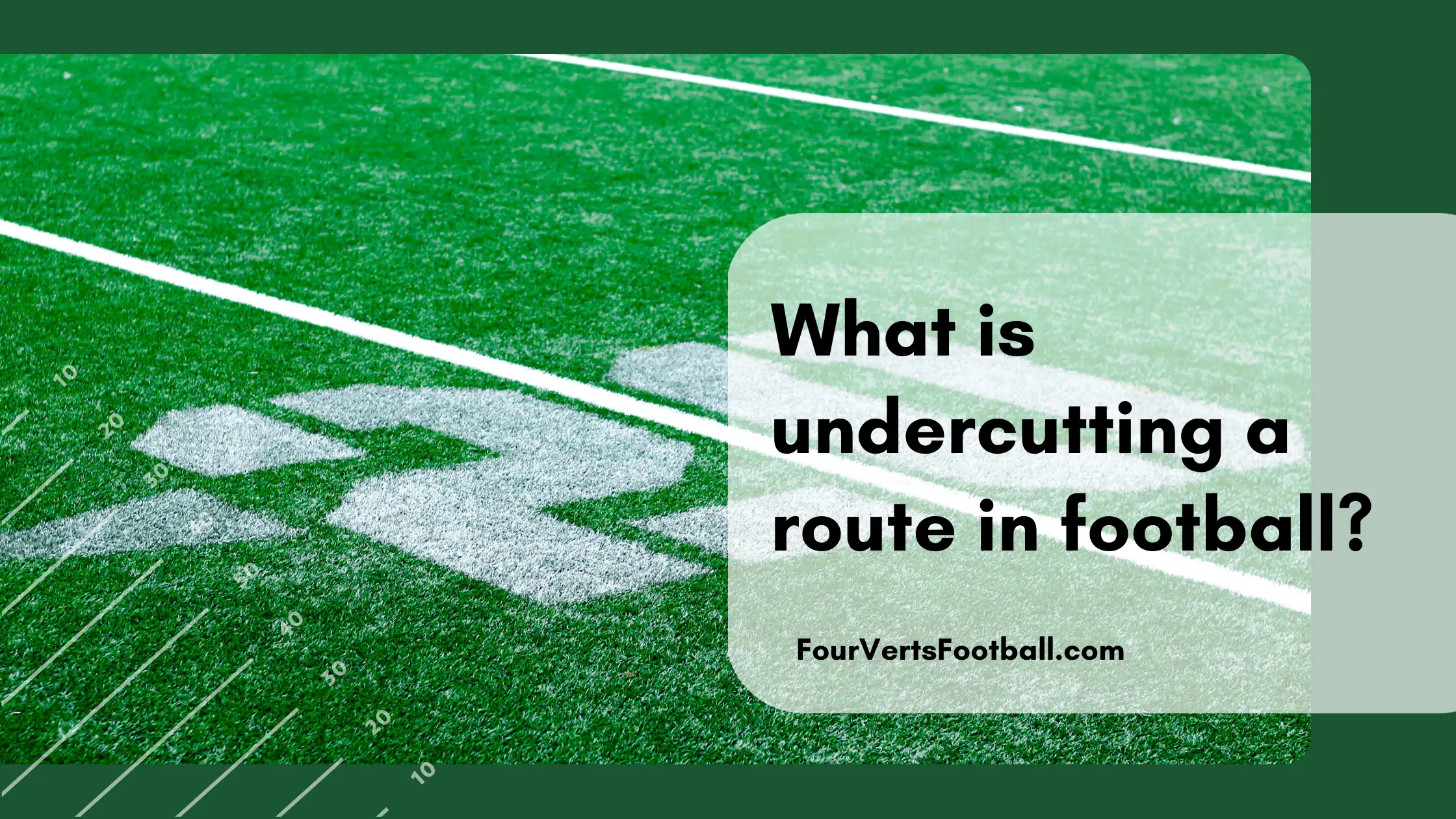If you watch football often you have likely heard an announcer reference a defensive player undercutting a route. For many football fans this terminology has never been explained.
Undercutting a route in football occurs when a defensive back is able to jump in front of a receiver before he catches the ball.
Undercutting a route is a fairly risky move in football because missing the ball results in the receiver being completed uncovered.
Having no defender on the receiver means they will often gain yards after catching the ball.
On the other hand, undercutting routes can generate interceptions. Interceptions change possession of the ball and can be a pivotal play for the defense.
Oftentimes defenders are more likely to undercut a route when they have help over the top.
In other words, when a defender has a teammate behind them they are able to go for the interception without risking a big play.
Cornerbacks and safeties are the positions most likely to undercut a route in football. This is because these players specialize in pass coverage and tend to have the best coverage skills.
Which routes are undercut in football?
Now that you know what undercutting a route is in football you may be curious as to what it looks like on the field.
To get a better understanding we are going to break down some receiving routes which are often undercut by defenders.
Comeback route
A comeback route in football features a wide receiver running down the field only to quickly turn back towards the quarterback.
The idea is that the wide receiver will turn around and come back creating separation from the defensive back who is further down the field.
Ideally, the quarterback wants to throw the ball right when the receiver makes his cut. If the quarterback is late throwing the ball then the defensive back will have a chance to undercut the route.
Giving the defensive back an extra second or two will allow him to come back to the quarterback as well.
If they are able to get in front of the receiver and undercut their route they will be able to get an interception and oftentimes a pick-six.
Corner route
A corner route is another receiving pattern that defensive backs may undercut.
On these routes the receiver will run roughly ten yards down the field before cutting on a 45-degree angle towards the pylon in the corner of the endzone.
The defensive back in this situation will often be playing slightly behind the wide receiver. Oftentimes there is going to be a safety over top playing a deeper coverage.
The ball is meant to be thrown overtop of the cornerback covering the wide receiver and below the safety.
Since the cornerback has help over the top they will often try and go for the ball on these plays.
The cornerback will undercut the route by attempting to reach the ball before it gets to the wide receiver. If the quarterback does not put the proper weight on his pass then the cornerback is going to have a chance at an interception.
Slant route
Another route that can be undercut by a defensive player in football is the slant route. These routes are quite short which makes them difficult to undercut as a defender.
But when a defensive back knows this route is coming they will attempt to undercut in order to beat the receiver to the catch point.
The most famous example of a player being undercut on a slant route occurred in Super Bowl XXXX when Malcolm Butler was able to intercept Russel Wilson to secure the win.
That is all on undercutting routes in football if you want to learn more about pass coverage see our guides to what is double coverage or what is double coverage or what is banjo coverage.

